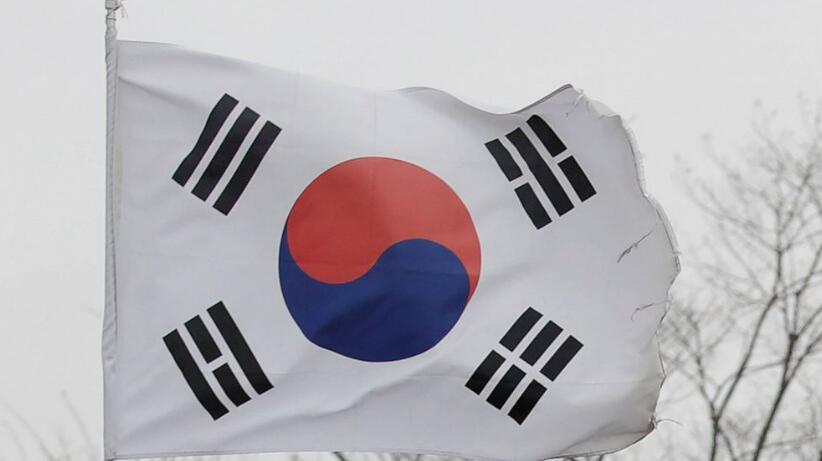The rival Koreas have exchanged warning shots along their disputed western sea boundary as animosities rise over North Korea’s recent weapons tests
SEOUL, South Korea — The rival Koreas exchanged warning shots along their disputed western sea boundary on Monday, their militaries said, amid heightened animosities over North Korea’s recent barrage of weapons tests.
South Korea’s Joint Chiefs of Staff said in a statement that its navy broadcast warnings and fired warning shots to repel a North Korean merchant ship that it says violated the sea boundary early Monday.
North Korea’s military said its coastal defense units responded by firing 10 rounds of artillery warning shots toward its territorial waters, where “naval enemy movement was detected.” It accused a South Korean naval ship of intruding into North Korean waters on the pretext of cracking down on an unidentified ship.
South Korea’s Joint Chiefs of Staff said the North Korean artillery firings breached a 2018 inter-Korean accord on reducing military animosities and undermines stability on the Korean Peninsula. It said the North Korean shells didn’t land in South Korean waters but South Korea is boosting its military readiness.
There were no reports of clashes, but the poorly marked sea boundary off the Korean Peninsula’s west coast is a source of long-running animosities between the Koreas. It’s a scene of several bloody inter-Korean naval skirmishes and violence in recent years, including the North’s shelling of a South Korean island and its alleged torpedoing of a South Korean navy ship that killed 50 people in 2010.
In recent weeks, North Korea has carried out a string of weapons tests in response to what it calls provocative joint military drills between South Korea and the United States. Some observers say North Korea could extend its spate of testing or launch provocations near the western sea border as South Korean and U.S. militaries are continuing their combined military exercises.
Washington and Seoul had scaled back or canceled their regular drills in recent years to support their now-dormant nuclear diplomacy with North Korea or guard against the COVID-19 pandemic. But the allies have been reviving or expanding those trainings since the May inauguration of conservative South Korean President Yoon Suk Yeol, who vows a tougher stance on North Korean provocation.
In its Monday statement, the General Staff of the North’s Korean People’s Army accused South Korea of provoking animosities near their land border as well with its own artillery tests and propaganda loudspeaker broadcasts. South Korea has already confirmed it performed artillery firings last week as part of its regular military exercises, but didn’t immediately respond to the North’s claim on the loudspeaker broadcasts.
“The KPA General Staff once again sends a grave warning to the enemies who made even naval intrusion in the wake of such provocations as the recent artillery firing and loudspeaker broadcasting on the ground front,” the North’s statement said.
In 2018, the two Koreas dismantled huge loudspeakers used to blare Cold War-style propaganda across their tense border as part of their reconciliation steps at the start of the now-dormant nuclear diplomacy between Pyongyang and Washington. If South Korea had restarted its propaganda broadcasts, that could trigger a strong North Korean response as it was previously extremely sensitive to South Korean broadcasts of criticism of its human rights situation, world news and K-pop songs. Most of North Korea’s 26 million people have no official access to foreign TV and radio programs.
“Pyongyang’s politics of blaming external threats and projecting confidence in military capabilities can motivate greater risk taking,” said Leif-Eric Easley, a professor at Ewha University in Seoul. “North Korean probing of South Korean perimeter defenses could lead to a serious exchange of fire and unintended escalation.”
Since Sept. 25, North Korea has fired 15 missiles and hundreds of artillery shells toward the sea.
The missile launches were largely designed to protest U.S.-South Korean trainings near the Korean Peninsula that involved an U.S. aircraft carrier for the first time in five years. North Korea said its artillery firing drills were staged as countermeasures against similar South Korean artillery drills at border areas.
Seoul and Washington routinely conduct military drills to maintain their readiness against potential North Korean aggressions. The allies say their drills are defensive in nature, but North Korea views them as an invasion rehearsal.
South Korea’s annual field exercises are set to end this Friday. This year’s drills involve an unspecified number of U.S. troops.
Next week, South Korea and the United States are to hold joint air force drills involving some 240 warplanes, including F-35 fighters operated by both nations. The drills are aimed at inspecting the two countries’ joint operation capabilities and improve combat readiness, the South Korean military said Tuesday.
Some experts say North Korea’s recent missile tests suggest its leader Kim Jong Un has no intentions of resuming stalled nuclear diplomacy with Washington anytime soon as he would want to focus on further modernizing his nuclear arsenal to boost his leverage in future negotiations with the United States.
